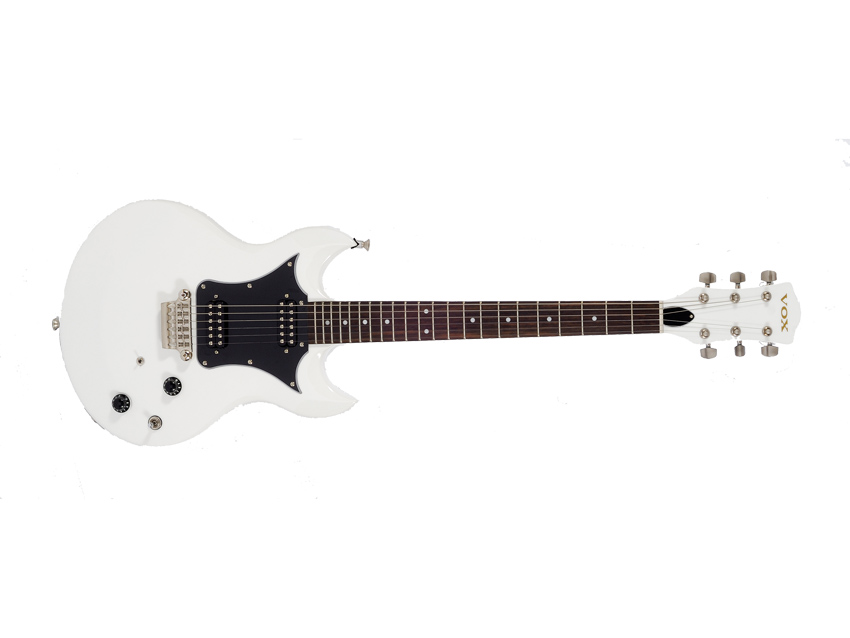MusicRadar Verdict
This Vox rocks straight out of the blocks.
Pros
- +
Excellent tone for the price-point. Convenient mode switch. Needed little adjustment straight-out-the-box.
Cons
- -
No pickup blend. MaxConnect bridge can be uncomfortable for palm muting.
MusicRadar's got your back

Vox Series 22

Vox Series 22
There's an old trick guitar manufacturers use: instead of giving their ranges names like 'A-list', 'Compromise' and 'Breadline', they employ discrete numerical shorthand so the caste system isn't too blatant.
And so, coming on the heels of the 77, 55 and 33, we saw the unveiling of the Vox Series 22 at NAMM 2011. It comes with a recession-busting £480 tag that represents rock-bottom in the Vox guitar catalogue.
Despite the price plunge (a 77 Series stings you for circa £1,300), Vox promises "many of the same components from our premium guitars" and the firm's track-record means hopes start high.
Let's not have the 'amp conversation'. Vox may be best known for its dazzling AC valve combos, but since the '60s it has made guitars for luminaries such as original Rolling Stones guitarist Brian Jones, and surfed the zeitgeist with the modern toneshaping features on its 77 and 55.
Better still, that quality seems to have filtered down; even the 33 (previously the entry-level model) features the CoAxe pickups of more expensive versions.
The 22 is a far simpler beast. There's no singlecut option or ash top here, just an SG-style mahogany doublecut that's contoured to feel slim and sleek. The build is basic, but tidy and while you'll want to watch that back-angled headstock, it feels reliable.
It fell out of the box in tune and only needed minor adjustment over several days, which bodes well for the road.
Want all the hottest music and gear news, reviews, deals, features and more, direct to your inbox? Sign up here.
Vox claims superior balance from the extended strap pin and stellar access from the dug-out inverse heel, but we'd only half agree. To us, this guitar pulls down a little, but the top frets really are accessible - impressive, given that the set join is sturdier than Gibson's horny design.
However, the control dials feel less rugged and the MaxConnect bridge is a little uncomfortable while palm muting (and we can't honestly detect much intonation difference between this and a bog-standard Tune-o-matic).
Still, it's good news in the main, with the not-too-chunky neck and medium frets enabling you to move between positions quickly. The scale sounds a little awkward (it's 25 1/8 inches), but maybe this halfway house is the reason why the 22 feels taut and yet encourages wide, expressive vibrato.
There are two ways to look at the Vox 22's tone: relative to its brethren and in its own right. Granted, the sounds are neither as complex nor as adaptable as that of its more costly elders - an inevitable by-product of having just one timber in the mix and the less-desirable XLM mini humbuckers onboard.
But let's stop comparing. For the price, the 22's voice sails far beyond professional; we love the wide, sparkling, mellow output of the neck pickup and are knocked out by the woody, vintage-sounding crunch of the bridge under a little gain.
Plus, a neat touch is the mode switch, which flips you between 'clean' and 'lead' sounds, and is a speedy option mid-song.
Still, if shaping the sonics is so important, why is there only one master tone dial and no option to blend pickup volumes on the 22? That's a minor quibble, though.
What this model (and its modern-generation brothers) proves is that while Vox's trump card will always be the AC30, this UK firm has other aces up its sleeve.